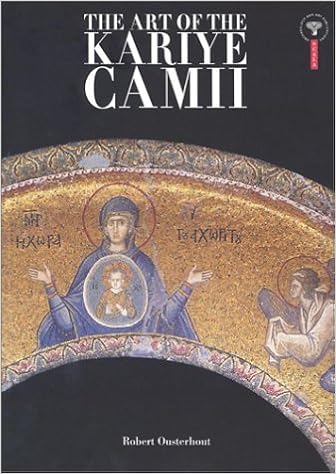Byzantine Churches, Monasteries
The Church of the Holy Saviour in Chora
Byzantine Churches
The Byzantine, or Eastern Roman, Empire, began with the foundation of Constantinople (formerly Byzantium) in ad324 and ended with its capture by the Ottoman Turks in 1453. The Byzantine style began in the age of Justinian (527–65), although elements can be found from C4, and continued long after the fall of Constantinople, especially where the Orthodox Church was dominant. When the Roman Emperor Constantine (324–37) established his new Imperial and administrative capital on the Bosphorus, the seeds were sown for a division of the Empire into Eastern and Western parts, with Greek becoming dominant in the former and Latin in the latter. The division was exacerbated in C11 when Christendom suffered its Great Schism, dividing into the Orthodox and RC Churches (the latter centred on Rome).
When Constantinople was founded, every effort was made to create a new Rome in the East. Many Roman buildings were plundered to enrich the city, and the Classical Orders were familiar there, as well as the style of architecture which we call Early Christian. However, two building-types played an important part in the evolution of a specifically Byzantine church architecture: the basilica and the circular temple. The latter was known in pagan times, but acquired greater complexity in C4 when circular clerestoreyed domed structures (as at Santa Costanza, Rome) were developed first as tombs, then centrally planned martyria (commemorative or pilgrimage shrines). It is clear that the martyrium was planned in a different way from an ordinary church, and from C4 martyria were known to have been constructed as octagons with radiating arms to produce cruciform plans.
The basilican type of church can be seen at Sant'Apollinare in Classe, Ravenna (534–49), where the clerestorey is carried on arcades set on rows of columns on rectangular pedestals and with curiously un-Classical capitals based on the Composite type. Above the abaci are blocks or dosserets from which the arches spring. Yet this building is essentially Italian, whereas San Vitale, also in Ravenna (c. 532–48), is very different: centrally planned, it has a clerestoreyed vaulted octagon carried on piers, a lower galleried aisle, and an apsidal chancel. Columns have block-like capitals, making the transition from circular shafts to square dosseret, and have virtually no connection with Classicism, while the bases are stepped and octagonal. San Vitale appears to have been a martyrium, and, architecturally, derives from the Church of Sts Sergios and Bacchos in Constantinople (c. 525–c.536), which has a clearstoreyed octagon. The beautiful lace-like capitals in Sts Sergios and Bacchos have only a suggestion of the Classical about them.
The great achievement of Byzantine architecture was the huge Church of Hagia Sophia (Holy Wisdom) in Constantinople (c. 532–7), designed by the scientists and mathematicians Anthemios of Tralles and Isidorus of Miletus. Various themes that were familiar at the time were synthesized and combined in one design, and it was rather as though the basic form of Sts Sergios and Bacchos had been cut in two, greatly inflated, and built on either side of a gigantic square space covered with a low saucer-dome carried on pendentives. Such a huge dome on a square space and constructed thus was unprecedented, and the complete synthesis of the basilican and centralized plan can be found in that great building. The church's interior was enriched with a skin of coloured marbles, porphyry, and other stones, while the vaults and domes were covered with the mosaics that were such a glorious feature of Byzantine churches.
The next largest church in Constantinople after Hagia Sophia was Hagia Irene (Holy Peace), begun 532, and rebuilt 564 and 740 (the C8 rebuilding included an additional dome over the nave, creating a more longitudinal plan). By C11, the typical Byzantine church-plan was a Greek crosswithin a square, roofed with a central dome flanked by four barrel-vaults and with domed squares in the corners. The plan is also known as the quincunx, and there were further variations on it (often consisting of three apses to the east and one or more narthexes to the west)—a good example is the Church of the Holy Apostles, Thessalonika (early C14), where cloisonné (stones individually framed horizontally and vertically with bricks), herring-bone, and other patterns occur.
The exteriors of earlier Byzantine churches often give the impression of having been left to their own devices, as though they were merely the result of the need to encase the rich interiors. Later churches, however, had greater care lavished on their exteriors: clerestoreyed drums of domes are taller, walls are often given the cloisonné treatment, while motifs based on the Kufic alphabet are introduced in bands on the wall-surface. A typical example is the Theotokos Church of the monastery of Hosios Loukas, Phocis (C10 or C11), probably the earliest representative of architectural themes that were to dominate in Byzantine architecture in Greece.
With the spread of Christianity north-wards, tall drums with domes recurred in the Ukraine and Russia: Hagia Sophia in Kiev (C11) had the rectangular cross-in-square plan, but there were five naves each with its own apse, and thirteen domes arranged in a pyramidal formation crowned the composition. Byzantine churches in Russia generally consisted of the cross-in-square, with many variants, as at Hagia Sophia, Novgorod (1045–50), and the Cathedral of the Transfiguration, Černigov (c.1036). However, after C11 the Byzantine themes were elaborated upon, and architecture became more identified as having national or regional styles. Among characteristic Russian themes are walls subdivided into bays by means of large blind arcades, and the ‘onion’ domes that evolved from the helmet-like domes in C13. A variation on the quincunx plan occurred in the C11 Church of San Marco, Venice, with a dome over the centre of the nave and over each of the four arms. Modelled on Justinian's Church of the Holy Apostles in Constantinople, it was deliberately antiquarian, as it was intended to enshrine the Relics of St Mark in a church that was as important as the Apostoleion in Constantinople (which contained the Relics of Sts Andrew and Luke).
From C7 the Eastern Empire was threatened from within and without, and fatally weakened by the Crusaders' sack of Constantinople in 1204, an event which deepened the rift between RC and Orthodox Christendom. Paradoxically, as the Empire contracted, missionary activity seems to have increased, and the Byzantine style proliferated over a wide area. In both Armenia and Georgia (Christian from C4), basilican and centralized churches were erected in numbers, although from the end of C6 the domed centralized plan, much influenced by architecture in Syria, began to reach heights of elaboration. In both Armenia and Georgia, a domed interior surrounded by four apses roofed with hemi-domes (the ‘tetraconch’ arrangement), the whole enclosed in a rectangle, was common. It is best represented by St Ripsime at Echmiadzin, Armenia (618–30), and the Holy Cross, Džvari, Georgia (before 605). It is unclear how certain Western-European buildings were influenced by (or influenced) some Armenian architecture, but certainly by the early C11 domed basilicas (such as at Ani (988–1000) began to acquire bundle-like piers, vaulting systems, and architectural features reminiscent of Western Romanesque and Gothic forms. However, Transcaucasia (Armenia and Georgia) developed a characteristic type of church architecture that had a surprisingly long life, usually based on the tetraconch plan with a high polygonal central drum pierced with windows. An example is Holy Cross, Aght'amar, Armenia (915–21), which also has the exterior enriched with figures and stylized ornament carved in low relief. In Bulgaria impressive Byzantine architecture evolved, including the extraordinary circular church at Preslav (a twelve-sided rotunda of c.900 with radiating niches, a projecting apse, a ring of internal columns on which the dome was supported, a western narthex flanked by circular towers, and an atrium surrounded by columns and with its deep walls enriched with niches). At the Black Sea town of Mesembria (Nesebŭr), known as the ‘Bulgarian Ravenna’, there are several Byzantine churches, including St John the Baptist (probably C10, a cross-in-square plan with barrel-vaulted aisles).
Serbian churches can be classified in three Schools: Raška (1170–1282); Byzantine Serbia (1282–1355); and the Morava (1355 to the Turkish domination beginning 1459). The first School combined Romanesque elements (notably in the treatment of gable-tops and eaves, fenestration, and arcading) with Byzantine domes and decorations. Good examples are the Church of the Virgin, Studenica, the Monastery at Sopočani (both C13), and the backward-looking Monastery Church of Dečani (1327–35). Later, the cross-in-square type of church acquired a pyramidal pile-up of domes: for example, the Monastery Church of Gračanica (c. 1318–21), where the upper array of barrel-vaults has pointed arches. The Morava School may be represented by the Church of the Ascension, Ravanica (c.1375)—another five-domed church, the elongated drums of which have deeply recessed arches—and by the church within the fortress of Resava (Manasija) of 1406–18. In Moldavia and Wallachia (Romania), the Byzantine influence acquired a rich exoticism. The Church of the Episcopal Monastery at Curtea de Argeş (C16) is an offspring of the Morava School, where the main body of the church is a trefoil, with a huge narthex given an ambulatory plan. The Monastic Church of Dealu (1502) is also a descendant of the Morava School, derived from the plan of the Church at Cozia (1386). Moldavian C16 and C17 churches are less overtly Byzantine in inspiration, but are uniquely decorated: among the best was the Monastery Church of Voroneţ (c.1488). It had a large rectangular narthex covered by a domical vault, and a trefoil nave with a tall drum in the centre. The three apses of the trefoil plan were treated with tall blind arcades, and the exterior was decorated with elaborate frescoes protected by wide overhanging eaves. A similar arrangement was given to the Monastery Church at Suceviţa (c. 1602–4).
A Byzantine Revival was spurred by scholarly publications in C19 following the independence of Greece and the Balkan States. Works include the Greek Orthodox Cathedral of Hagia Sophia, Moscow Road, Bayswater, London (1877–82), by John Oldrid Scott (1841–1913), and Westminster Cathedral (1895–1903), by John Francis Bentley.
Curl, James Stevens. "Byzantine architecture." In A Dictionary of Architecture and Landscape Architecture. : Oxford University Press, 2006.
Byzantine Monasteries
(μονή), complex of buildings housing monks or nuns (see also Nunnery). The term is used primarily for a koinobion, lavra, or an idiorrhythmic monastery. Byz. monastic architecture was standardized at a fairly early date, with many of the common elements appearing at Sohag in Egypt, Qalʿat Semʿān in Syria, and St. Catherine on Mt. Sinai. A monastery was often contained within strong defensive walls, along the inside of which were located the dormitories of the monks, stables, workshops, and storage buildings. These surrounded an open space, with the principal church (the katholikon) at its center. In front of the church was the phiale. One side of the enclosure, most commonly that facing the church, was occupied by the refectory (trapeza). Other buildings could include a bath and an infirmary.
Monasteries varied greatly in size, ranging from a minimum of three (later eight to ten) monks to several hundred (A.-M. Talbot, GOrThR 30 [1985] 4f, 18–20). They were located in both town and countryside but were most numerous in Constantinople and the holy mountains such as Mt. Olympos and Mt. Athos. A. Bryer estimated that about 1,000 different monasteries are recorded in the Byz. sources (SChH 16 [1979] 219f, n.3), about one-third of them in Constantinople (a statistic perhaps skewed by the nature of the available sources).
There were no monastic “orders” as in the West; thus the organization of each monastery varied and was prescribed by its typikon. There were nonetheless some connections between monasteries, for example, between those on the same holy mountain or between a monastery and its smaller affiliated establishments, the metochia. The typika of some monasteries were closely modeled on those of earlier foundations. Monasteries were variously classified as imperial, patriarchal (see Stauropegion), or episcopal, and as private or independent.
In general each monastery had a superior (hegoumenos), steward (oikonomos), sacristan (ekklesiarches), and other officials charged with supervision of the refectory, treasury, and archives. Most monasteries possessed agricultural lands and other properties that provided food for the monks and revenues to maintain the buildings and operations of the monastery. (See also Monasticism.)
Johnson, Mark J., and Alice-Mary Talbot. "Monastery." In The Oxford Dictionary of Byzantium. : Oxford University Press, 1991.
Books on Byzantine Religious Architecture
-
Architecture and Ritual in the Churches of Constantinople by
Call Number: NA2543.S6 M359 2014ISBN: 9781107040168Publication Date: 2014-01-13 -
Byzantine Churches in Constantinople by
Call Number: NA5870.A1 .V26 1912ISBN: 9781406712131Publication Date: 2006-05-01 -
Early Byzantine Vaulted Construction in Churches of the Western Coastal Plains and River Valleys of Asia Minor by
Call Number: NA5862 .K37 2011ISBN: 9781407308104Publication Date: 2011-07-15 -
Hagia Sophia : ho naos tēs Hagias tou Theou Sophias = Hagia Sophia : the church of the Holy Wisdom of God by
Call Number: NA5870.A9 D48 2004ISBN: 9608326141 -
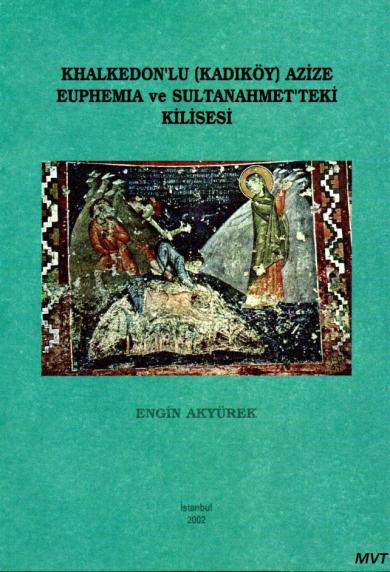 Khalkhedon'lu (Kadıköy) Azize Euphemia ve Sultanahmet'teki Kilisesi
by
Call Number: ND2583 .A59 2002ISBN: 9754046468
Khalkhedon'lu (Kadıköy) Azize Euphemia ve Sultanahmet'teki Kilisesi
by
Call Number: ND2583 .A59 2002ISBN: 9754046468 -
-
Form, Style and Meaning in Byzantine Church Architecture by
Call Number: NA4829.B9 B834 2001ISBN: 0860787796Publication Date: 1999-11-28 -
Approaching the Holy Mountain by
Call Number: BX387 .A67 2010ISBN: 9782503531274Publication Date: 2011-07-01 -
Cave Monasteries of Byzantine Cappadocia by
Call Number: NA5869.C3 R6 2010ISBN: 9780521154772Publication Date: 2010-08-26 -
 Nea Moni on Chios : history and architecture
by
Call Number: NA5599.C45 B6813 1982
Nea Moni on Chios : history and architecture
by
Call Number: NA5599.C45 B6813 1982 -
 The monastery of Daphni : brief illustrated archaeological guide
by
Call Number: BX385.D3 L3913 1987
The monastery of Daphni : brief illustrated archaeological guide
by
Call Number: BX385.D3 L3913 1987 -
-
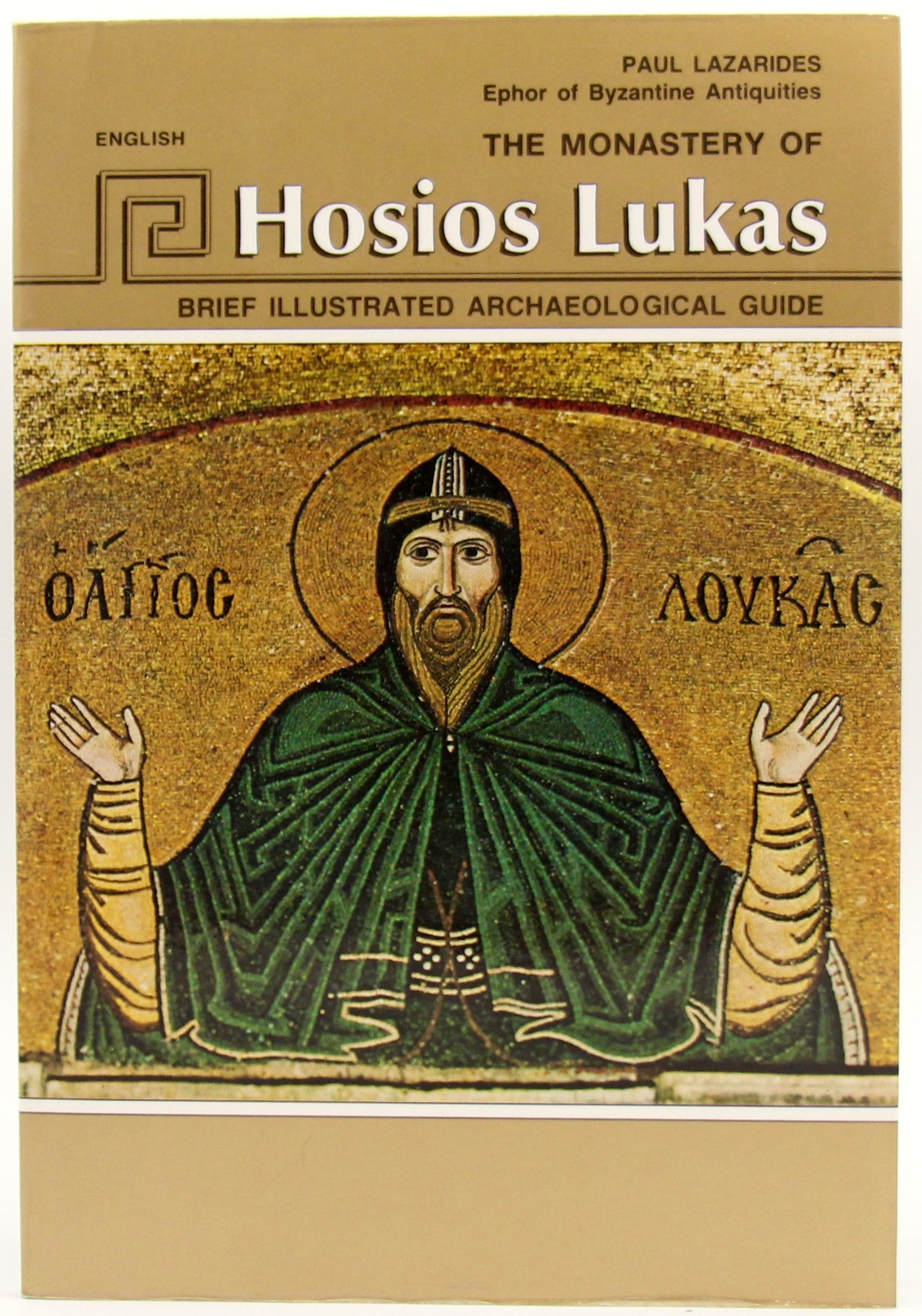 The Monastery of Hosios Lukas
by
Call Number: NA5601.H7 L3913 1980
The Monastery of Hosios Lukas
by
Call Number: NA5601.H7 L3913 1980 -
 Alakent Church : A Byzantine monument at Myra (12th – 13th centuries)
by
Call Number: NA5871.D4 A5313 2017ISBN: 9786052116159
Alakent Church : A Byzantine monument at Myra (12th – 13th centuries)
by
Call Number: NA5871.D4 A5313 2017ISBN: 9786052116159 -
The Architecture of the Kariye Camii in Istanbul by
Call Number: NA5870.K3 O9 1987ISBN: 0884021653Publication Date: 1988-01-01 -
-
 Kariye Camii, yeniden = The Kariye Camii Reconsidered
by
Call Number: NA5870.K3 T44 2007ISBN: 9789759123823
Kariye Camii, yeniden = The Kariye Camii Reconsidered
by
Call Number: NA5870.K3 T44 2007ISBN: 9789759123823 -
 Peristoon in the late Byzantine Church Architecture
by
Call Number: NA4829.B9 H33 2004ISBN: 9608842301
Peristoon in the late Byzantine Church Architecture
by
Call Number: NA4829.B9 H33 2004ISBN: 9608842301 -
-
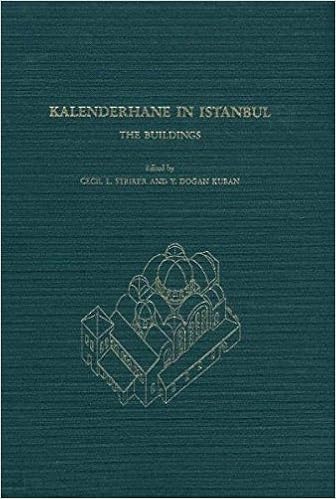 Kalenderhane in Istanbul
by
Call Number: NA5870.K2 K34 1997ISBN: 3805320264Publication Date: 1997-01-01
Kalenderhane in Istanbul
by
Call Number: NA5870.K2 K34 1997ISBN: 3805320264Publication Date: 1997-01-01 -
 Die Gül Camii in Istanbul. Ein Beitrag zur mittelbyzantinischen Kirchenarchitektur Konstantinopels
by
Call Number: NA5870.G85 S34 1973
Die Gül Camii in Istanbul. Ein Beitrag zur mittelbyzantinischen Kirchenarchitektur Konstantinopels
by
Call Number: NA5870.G85 S34 1973 -
The Pantokrator Monastery in Constantinople by
Call Number: BX385.I752 P366 2013ISBN: 9781614515999Publication Date: 2013-09-17 -
The Framing of Sacred Space by
Call Number: NA5453 .B64 2017ISBN: 9780190465186Publication Date: 2017-07-20 -
 The early churches of Constantinople : Architecture and liturgy
by
Call Number: NA5870.I7 M3 1971ISBN: 0271001089Publication Date: 1990-10-01
The early churches of Constantinople : Architecture and liturgy
by
Call Number: NA5870.I7 M3 1971ISBN: 0271001089Publication Date: 1990-10-01 -
-
 The Monastery of Lips (Fenari Isa Camii) at İstanbul
by
Call Number: NA5870.F46 M3
The Monastery of Lips (Fenari Isa Camii) at İstanbul
by
Call Number: NA5870.F46 M3 -
The Myrelaion (Bodrum Camii) in Istanbul by
Call Number: NA5870.M97 S77 1981 -
 Latomou Monastery : (The church of Hosios David)
by
Call Number: NA4850 .T7513 1988
Latomou Monastery : (The church of Hosios David)
by
Call Number: NA4850 .T7513 1988 -
 Der Geometrische Entwurf der Hagia Sophia in Istanbul
by
Call Number: NA5870.A9 G46 2005ISBN: 082047553XPublication Date: 2005-01-01
Der Geometrische Entwurf der Hagia Sophia in Istanbul
by
Call Number: NA5870.A9 G46 2005ISBN: 082047553XPublication Date: 2005-01-01 -
-
 The Church of the Holy Apostles in Thessaloniki
by
Call Number: NA5601.T45 N5513 1986ISBN: 9789607387196
The Church of the Holy Apostles in Thessaloniki
by
Call Number: NA5601.T45 N5513 1986ISBN: 9789607387196 -
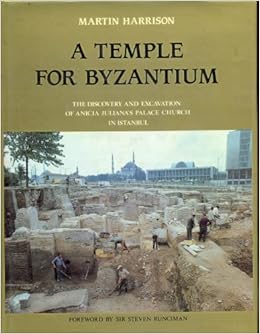 A Temple for Byzantium
by
Call Number: NA5870.C48 H37 1989ISBN: 0292781091Publication Date: 1989-12-01
A Temple for Byzantium
by
Call Number: NA5870.C48 H37 1989ISBN: 0292781091Publication Date: 1989-12-01 -
Varieties of Monastic Experience in Byzantium, 800-1453 by
Call Number: BX2435 .T35 2019ISBN: 9780268105624Publication Date: 2019-04-30 -
Hagia Sophia in Context by
Call Number: NA5870.A9 D37 2019ISBN: 9781789250305Publication Date: 2019-05-09The Byzantine cathedral of Hagia Sophia has been a source of wonder and fascination since its sixth-century construction. It was the premier monument of the Byzantine capital, Constantinople, and remains one of the most recognisable symbols of modern Istanbul. Often seen as encapsulating Byzantine history and culture, the building has been the subject of much scholarly interest since the Renaissance. However, while almost all previous archaeological work has focussed on the church itself, the surrounding complex of ecclesiastical buildings has been largely neglected. The research project presented here (co-directed by the authors) is the first to focus on the archaeology of the immediate environs of the church in order to understand the complex as a whole. Previously unrecorded material includes parts of the Patriarchal complex, from which the Orthodox Church was governed for almost a millennium, what may be the 'Great Baptistery' north of the church, and what are perhaps the first fragments of the fourth-century phase of the cathedral yet identified. The discovery of an unrecognised porch, surviving to its full height within the standing building, changes the known plan of the famous sixth-century church. This new information provides fresh evidence about the appearance and function of the complex, illustrating its similarities to, and dissimilarities from, episcopal centres elsewhere in the Byzantine world. Combined with other archaeological sources, these discoveries enable us to place the sixth-century cathedral in its urban context and to reconsider what Hagia Sophia can tell us about the wider Byzantine world.





